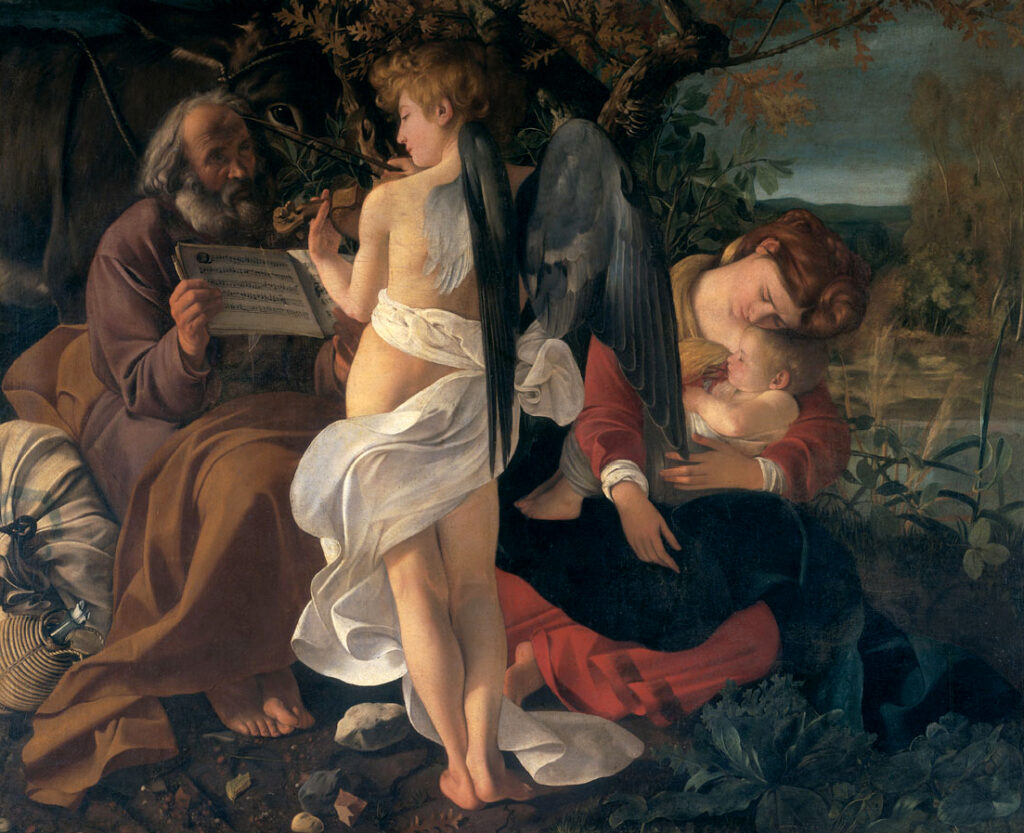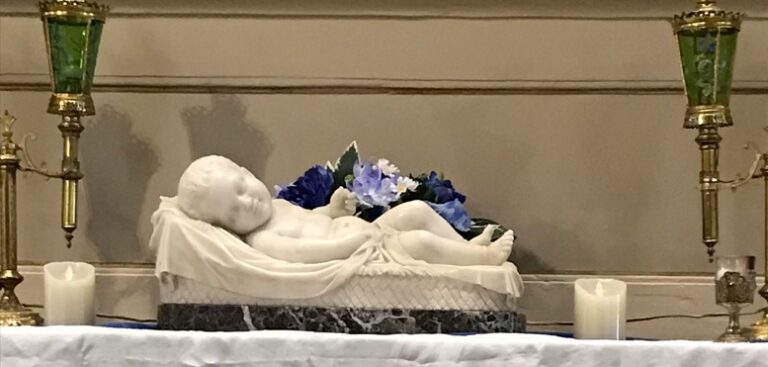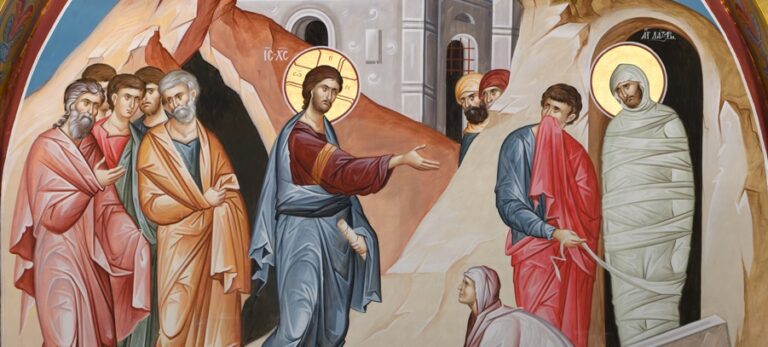
THE HOLY FAMILY: PILGRIMS OF HOPE

Churches and Cathedrals in Canada and around the world are beginning the celebration of the Jubilee Year whose theme is “Pilgrims of Hope.” Mary and Joseph carrying the Christ-child within are the first Pilgrims of Hope we encounter in the Gospels. They move from Nazareth to Bethlehem to Egypt and back to Nazareth in their great journey of hope amid darkness and conflict. They provide a model for families today of our own pilgrimages guided by grace along strife-torn paths. The peace, love and dedication that radiates from the Holy Family teach us today how to live holy lives in dangerous times. But let’s look at how this particular feast has evolved over the past few centuries.
Canadians can take great pride in playing a great role in bringing the feast of the Holy Family into the universal Catholic liturgical calendar. Many of the early settlers in New France brought a devotion to Jesus, Mary and Joseph from France, but it wasn’t until 1663 that St. Francois-Xavier de Montmorency-Laval, Quebec’s first bishop, endorsed the Confraternity of the Holy Family. This group established liturgical practices that were adopted in the Quebec diocese and gradually spread world-wide. Pope Leo XIII saw the movement as an antidote to the pressures on family life brought about by industrialization and urbanization in the late 1800’s. He encouraged the celebration in dioceses that wished to celebrate this feast. Meanwhile, in Canada, this devotion to the Holy Family contributed to the establishment of two great shrines: Sainte-Anne-de-Beaupré and St. Joseph’s Oratory.
Pope Benedict XV was greatly troubled by the social impact of the First World War on top of the destructive trends in family life observed by Pope Leo XIII. Pope Benedict XV amplified the status of the feast of the Holy Family by making it a universal feast in the Roman calendar. In 1969 in the pontificate of St. Paul VI, the date of the celebration was fixed on the Sunday following Christmas Day.
St. Paul VI also made a valuable contribution to our understanding of the Holy Family in Nazareth in a commentary on the Liturgy of the Hours. This is how it begins:
Nazareth is a kind of school where we may begin to discover what Christ’s life was like and even to understand his Gospel. Here we can observe and ponder the simple appeal of the way God’s Son came to be known, profound yet full of hidden meaning. And gradually we may even learn to imitate him.
Here we can learn to realise who Christ really is. And here we can sense and take account of the conditions and circumstances that surrounded and affected his life on earth: the places, the tenor of the times, the culture, the language, religious customs, in brief, everything which Jesus used to make himself known to the world. Here everything speaks to us, everything has meaning. Here we can learn the importance of spiritual discipline for all who wish to follow Christ and to live by the teachings of his Gospel.
St. Paul VI identifies three gifts that the Holy Family gives to us in this school of Nazareth: the catechesis of silence, the communion of love, and the dignity of work. These points are beautifully illustrated in Caravaggio’s Rest on the Flight to Egypt.
The scene depicts an imagined stop on the hurried flight of the Holy Family to Egypt as told in Matthew 2:13-23. An angel serenades Mary and Jesus while a weary Joseph holds the sheet music for the angel.
The catechesis of silence. All figures are silent, except for the heavenly music bringing divine beauty into their lives. The silences in the Holy Family’s life teach us to find silences in our own lives to listen for God’s music and be present to God’s beauty. Like the Holy Family, we are all on a journey through the tumult of our times, so much in need of silence beyond the chaos.
The communion of love. Mary’s caress of her newborn Son conveys the deep love that radiates from this canvas. This is a love that is born of vulnerability. All four figures have bare feet, they are literally grounded in God’s creation. But there is love that serves: Mary tending to her child, Joseph holding the music sheets and the angel playing the violin.
The dignity of work. Joseph epitomizes the school of Nazareth in his silent devotion and ready service. Here he holds the pages of the sacred songbook to help the angel. May all our work be of service to the sacred, here and in heaven. St. John Paul II writes:
Human work, and especially manual labor, receives special prominence in the Gospel. Along with the humanity of the Son of God, work too has been taken up in the mystery of the Incarnation, and has also been redeemed in a special way. At the workbench where he plied his trade together with Jesus, Joseph brought human work closer to the mystery of the Redemption (Redemptoris custos, 22).
The school of Nazareth is a pilgrim community, much like our own families. Three people in communion with each other and part of the larger Galilean community moving from Annunciation to Visitation to Bethlehem to Egypt to Nazareth to Jerusalem to teach the leaders of the temple to the Jordan and then back to Jerusalem and the cross and beyond. This was a pilgrimage of hope fueled by gratitude: the joyful gratitude of Mary to the God who “has done great things” for her; the silent gratitude of Joseph in his faith-filled response to his vocation to love; and Jesus incarnated as the embodiment of grace. Grace and gratitude come from the same Greek words: charis and eucharisto. As Pilgrims of Hope in this Jubilee Year, we walk with and toward grace, where God’s love dances with our gratitude.
Prayer for the Feast of the Holy Family
Our hearts swell with gratitude to blessed Jesus, Mary and Joseph.
We give thanks for the school of Nazareth that radiates joy, peace and dedication.
May we return again and again to learn and dwell amidst divine grace,
to build our own schools of love among our families and friends,
reflecting your goodness into the surrounding darkness.
Into clamour and confusion let us bring silence and wisdom.
Into discord and conflict let us bring harmony and peace.
Into distraction and emptiness let us bring meaning and purpose.
Holy Family, in this Jubilee Year
Bless us and guide us toward the divine light of goodness, truth and beauty
as Pilgrims of Hope.
Amen.
Les Miller is a husband, dad, grandfather and catechist. He has served the Catholic education community for 40 years as teacher, chaplaincy team leader, Department Head. AQ Instructor, textbook writer, and Religious Education and Family Life Consultant. Les authored the 25 Questions Series, Words for the Journey and award-winners Catholic Teacher’s Companion and Northern Light. Currently, he is an instructor and advisor with the Archdiocese of Toronto’s online Catechist formation program and lead contributor to the St. Monica Institute’s series on praying with art, Abide in Beauty.


